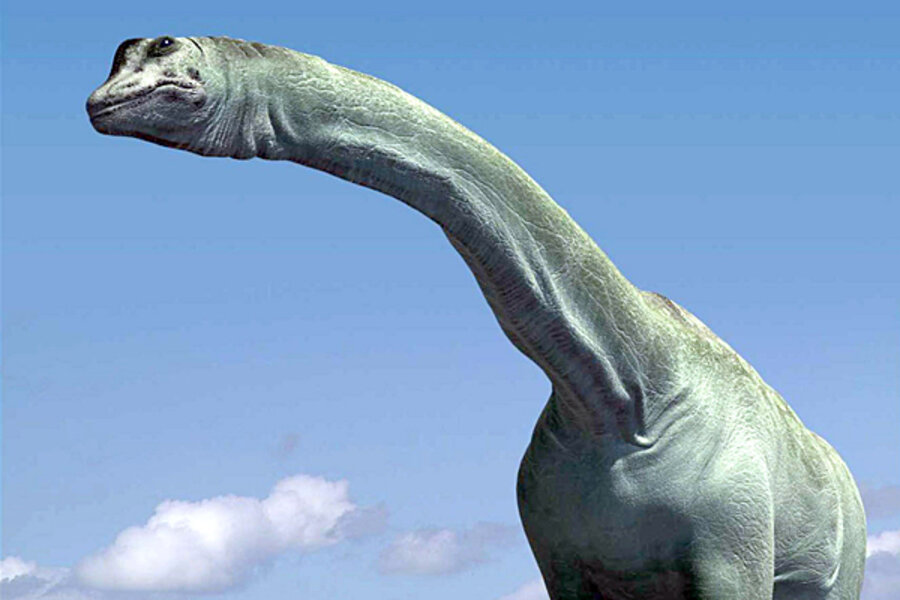Did gassy dinosaurs cause global warming?
Loading...
| LOS ANGELES
Dinosaurs' gassy guts may have contributed to global warming tens of millions of years ago, according to a new study that finds a group of plant-eating dinosaurs could have produced about as much methane as all of today's natural and man-made sources of the greenhouse gas.
British researchers reported in Tuesday's edition of the journal Current Biology that the methane emissions from sauropods far outstripped those of today's cattle, goats and other cud-chewing mammals.
Sauropods were a diverse bunch of plant-eating dinosaurs, known for their small heads and giant bodies with long necks and tails. An average-sized sauropod _ such as Apatosaurus louisae, once popularly known as brontosaurus _ could weigh 44,000 pounds, making it several times bigger than an elephant.
Like many modern herbivores, scientists think, sauropods probably hosted a diverse community of microbes in their guts to help break down and digest their food, producing methane in the process. In cattle and other ruminants, that gas is released in the form of burps and flatulence.
Such emissions from modern-day cattle are considered a major source of the greenhouse gas, adding up to roughly 55 million to 110 million tons per year. Though carbon dioxide is more abundant in the atmosphere, methane is more than 20 times as effective at trapping heat, according to the Environmental Protection Agency.
The problem of cattle emissions prompted ecologist David Wilkinson of Liverpool John Moores University in England to consider the climate-changing effects of sauropods.
He and two other researchers used a formula from a study last year that linked body mass to methane emissions from guinea pigs and rabbits. The relationship is straightforward: The more body mass there is, the more methane is produced.
For their investigation, Wilkinson and his colleagues had to make some assumptions _ for example, that the ratio of body size to gas produced is the same for small and extremely large animals. "That's a slightly dodgy thing to do," Wilkinson acknowledged, "but in this case there's not any other option."
The researchers also used published population estimates from the late Jurassic (about 161 to 145 million years ago) to gauge how many sauropods had been roaming the Earth back then.
Altogether, the team concluded, sauropods were likely producing on the order of 572 million tons of methane per year _ more than five times as much methane as modern-day cattle and other ruminants. Today, worldwide emissions from animals and from such human activities as burning natural gas and collecting trash in landfills is estimated to produce 550 million to 660 million tons of methane per year, the researchers said.
Wilkinson said he expected to find that the dinosaurs were perhaps only a little more productive than today's animals. The results, he said, "surprised me."
It would take more study of the ancient climate to find out whether, and how, sauropods warmed Earth's atmosphere during the Mesozoic era, said Marcus Clauss, a digestive physiologist at the University of Zurich who helped develop the formula for determining methane emissions from body mass.
Wilkinson's team was not the first to suspect that Earth's ancient behemoths were responsible for some climate change: A 2010 study in the journal Nature Geoscience found that atmospheric methane levels dropped in the Americas once native megafauna such as mammoths and giant ground sloths went extinct _ around the same time that humans arrived on the continents.







